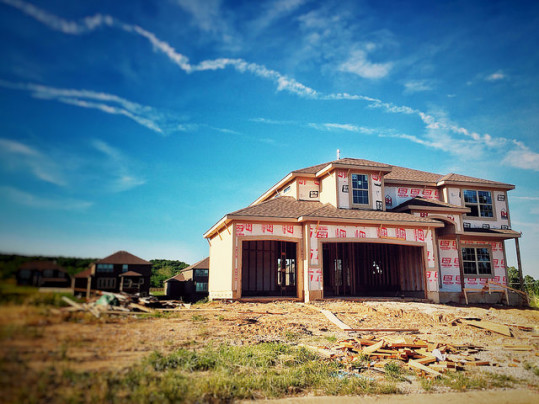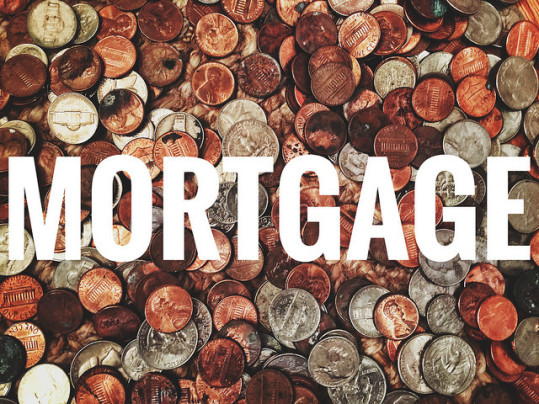These days, competition and affordability are two of home buyers’ main concerns. This isn’t surprising, as no one likes to pay more for less. Naturally, we prefer to find a bargain and we certainly don’t want to have to fight off other interested buyers to get it. That’s why recent research looking at the country’s most competitive markets is of interest. The results show the most competitive markets are located in the West, though in just about any desirable neighborhood you could find more buyers than available homes. That means, even if you aren’t living in San Francisco or Seattle, you should be ready for the possibility that you won’t be the only home buyer interested in the house you choose. So what’s the best way to increase your odds of beating the competition and getting the house you want? Preparation. Be prepared and get prequalified before you start shopping. Buyers with financing in place before they start looking at houses are more appealing to sellers. If you’ve got your financing in place and a firm idea of what your price range and budget are, you will be in better position should you find yourself in a bidding war. More here.
Archive for January 2018
Builders Confident 2018 Will Be A Good Year
If anybody knows the new home market, it’s builders. After all, they are the ones supplying the homes and, if there’s no demand, they likely wouldn’t bother doing the work. So, when it comes to assessing the health of the market for newly built single-family homes, asking a builder is a pretty good place to start. For that reason, the National Association of Home Builders has been doing exactly that each month for the past 30 years. And, according to their most recent Housing Market Index – which measures builder confidence – builders are feeling excited about the year ahead. Randy Noel, NAHB’s chairman, says builders are particularly optimistic about the economy and the growing demand for new homes. “Builders are confident that changes to the tax code will promote the small business sector and boost broader economic growth,” Noel said. “Our members are excited about the year ahead, even as they continue to face building material price increases and shortages of labor and lots.” So what does this mean for home buyers? Well, it means more new homes will be built, which increases choices and also dampens price spikes. In other words, optimistic builders are a good sign for home buyers in 2018. More here.
Mortgage Rates Rise, So Does Application Demand
According to the Mortgage Bankers Association’s Weekly Applications Survey, average mortgage rates increased last week, reaching their highest level since March of last year. Rates were up across all loan categories – including 30-year fixed-rate loans with both conforming and jumbo balances, loans backed by the Federal Housing Administration, and 15-year fixed-rate loans. But, despite the rise, borrowers drove demand for mortgage applications higher than the week before. In fact, total mortgage application demand was up 4.1 percent from one week earlier. So what’s going on? Well, one theory, is that buyers are motivated because they feel conditions may be as good as they’re going to get. Joel Kan, an MBA economist, told CNBC borrowers are looking to take advantage of conditions while they’re good. “Despite the increase in rates, applications increased for both purchase and refinance,” Kan said. “These increases were partly due to an upswing following the holiday season lull and potentially more borrowers trying to refinance before mortgage rates increase further.” The MBA’s weekly survey has been conducted since 1990 and covers 75 percent of all retail residential mortgage applications. More here.
What To Know About Real Estate Disclosures
If you’re thinking about buying or selling a home any time soon, you should probably know something about disclosure requirements in your state. In short, disclosure requirements are put in place to make sure homeowners selling a house let potential buyers know of any and all issues there are with the house that might not be otherwise obvious. Things like defective appliances or systems, roof leaks and age, foundation problems, existence of radon or asbestos, water damage, neighborhood issues, termites, etc., are the types of things that a homeowner must let a buyer know about before the sale. This is to protect both the buyer and the home seller, as it also safeguards against any possible litigation after the home’s sold. As a home seller, you won’t be liable for anything you didn’t know about but disclosure requirements are meant to ensure that a home buyer has as much knowledge about a property as reasonably possible before signing any papers. That means, you should always err on the side of too much information, rather than too little. To learn more about your state’s requirements, click here.
Buying More Affordable Than Rent In Most Markets
When it comes time to make a move, most of us are choosing between renting a place or buying a house. And making that calculation has a lot to do with where you are in your life and what your goals are. But it also has a lot to do with your financial situation. Because of this, ATTOM Data Solutions analyzes the average rent for a three-bedroom property, weekly wage data, and home price information in 540 counties nationwide in an effort to determine whether renting or buying is the more affordable choice. According to their most recent Rental Affordability Report, buying a home is still the more affordable choice in a majority of markets. However, the data is a bit more complicated than that. In fact, though buying is more affordable in the majority of markets, it isn’t in a lot of the country’s most populated counties. The data shows that many markets where the population is above 1 million have affordability challenges not seen in areas further from major metropolitan centers. More here.
Should Today’s Buyer Expect To Pay Above Asking?
Even if you’ve never purchased a house before, you likely know that – unlike buying a hammer at the hardware store – a home’s price is up for negotiation. Depending on market conditions, a home seller may be willing to sell for less than their asking price or, if they’ve got a number of offers, may expect to get more than they asked for. Either way, knowing what to expect when you start your home search can help you set your budget and limits before you’re competing with another buyer for a home you love. In other words, it’s smart to plan ahead. And, if this year is anything like last year, you might want to plan for competition. That’s because, new research shows nearly a quarter of all homes sold last year sold for above their list price. In fact, on average, homes sold for $7,000 more than what they were listed at. However, this isn’t true for all markets. For example, home buyers in cities like Orlando and Phoenix were far less likely to pay above asking price than buyers in markets like San Francisco and Seattle. More here.
Mortgage Demand Jumps Following Holidays
According to the Mortgage Bankers Association’s Weekly Applications Survey, average mortgage rates held steady again last week, with little change for 30-year fixed-rate mortgages with conforming loan balances. But, though not moved from the previous week, rates are lower than they were at the same time last year. That, and some pent-up demand from the holidays, led to a spike in mortgage application demand last week. In fact, total application volume was up 8.3 percent during the first week of 2018. Joel Kan, MBA economist, told CNBC mixed economic news kept rates steady. “For example, the ISM’s non-manufacturing index showed that growth in the services sector was down for the second month, and the BLS’ December jobs report was weaker than expected,” Kan said. “However, these were partially offset by slightly stronger factory orders for November and continued optimism of positive impacts from the tax reform plan.” In short, economic conditions have kept rates steady for the past several weeks and borrowers finally took advantage last week. The MBA’s weekly survey has been conducted since 1990 and covers 75 percent of all retail residential mortgage applications. More here.







